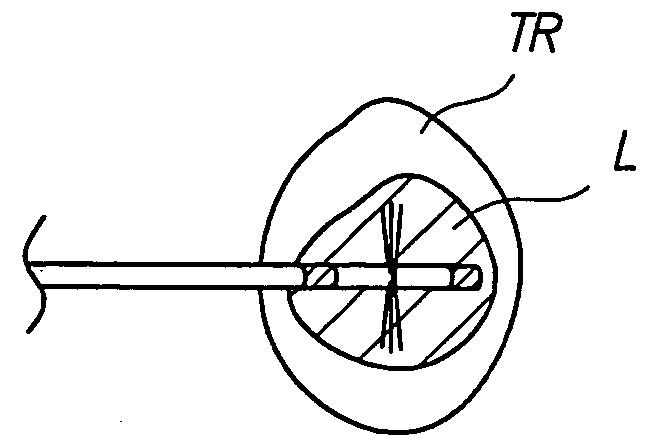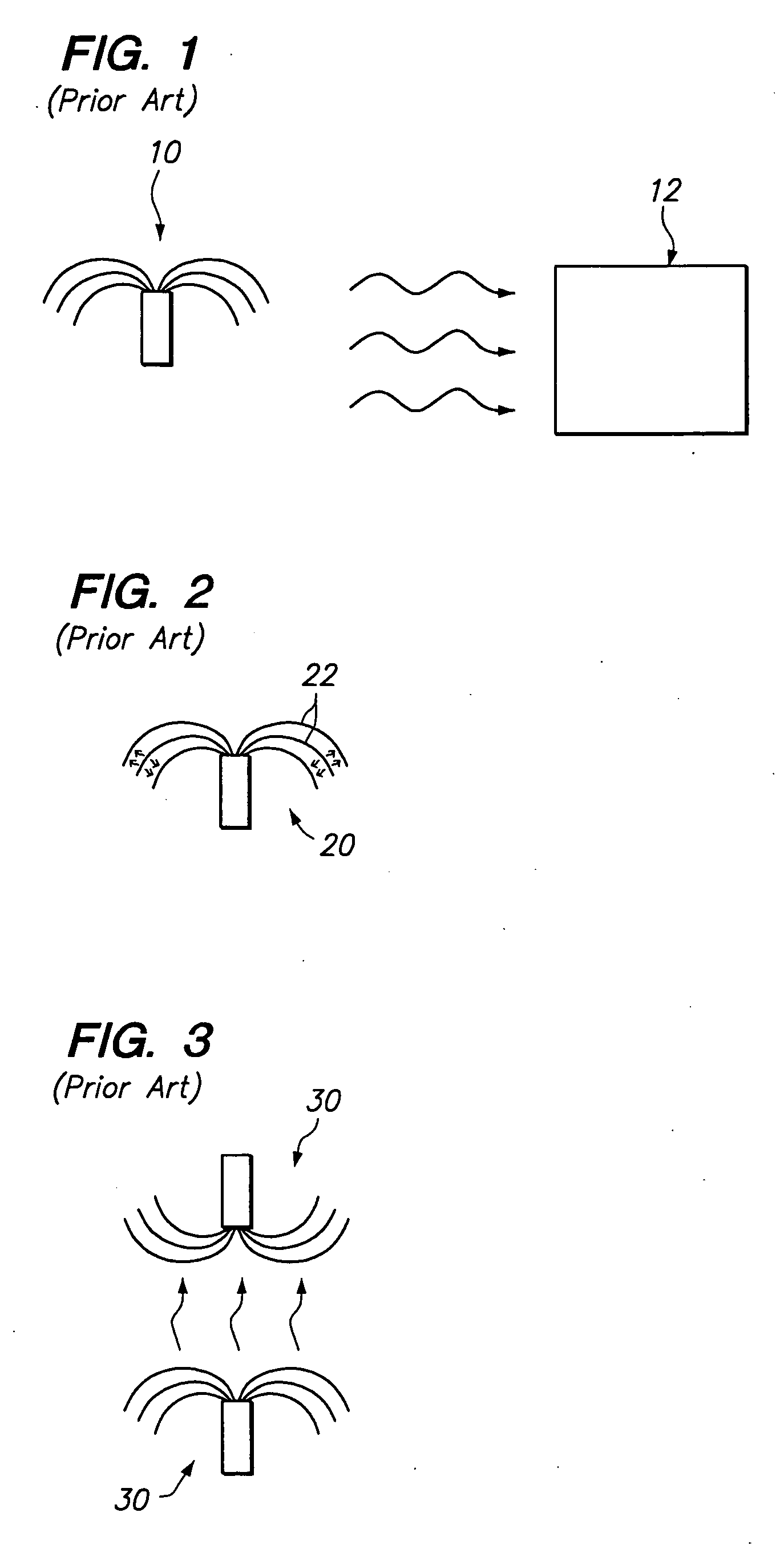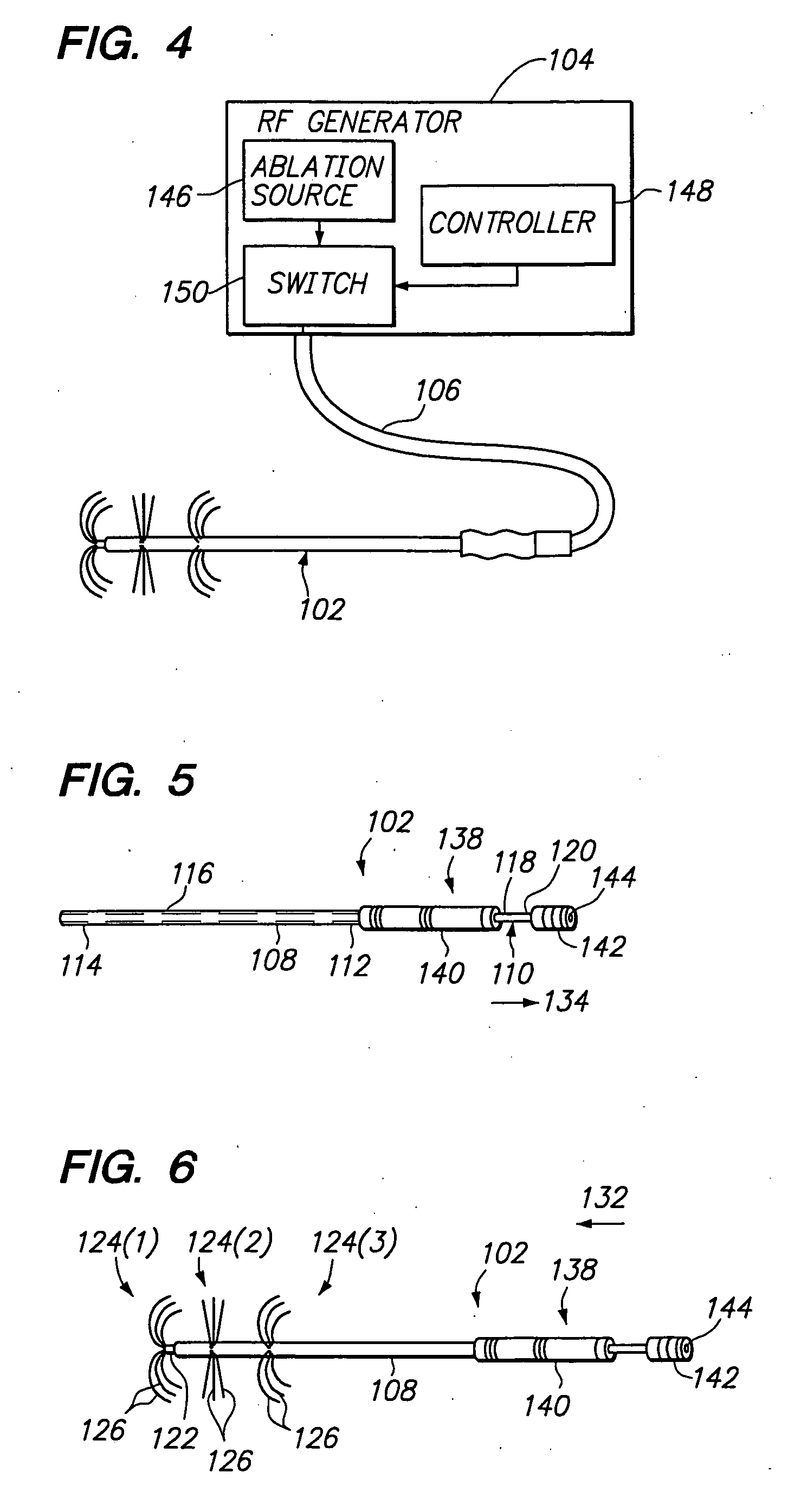Multi-zone bipolar ablation probe assembly
a probe and multi-zone technology, applied in the field of electrosurgical probes, can solve the problems of limited tissue coagulation from a single electrode, limited heat dissipation, and insufficient ablation of intermediate tissue, and achieve the effect of efficient tissue ablation
- Summary
- Abstract
- Description
- Claims
- Application Information
AI Technical Summary
Benefits of technology
Problems solved by technology
Method used
Image
Examples
Embodiment Construction
[0039]FIG. 4 illustrates a tissue ablation system 100 constructed in accordance with a preferred embodiment of the present invention. The tissue ablation system 100 generally comprises a probe assembly 102 configured for introduction into the body of a patient for ablative treatment of target tissue, a radio frequency (RF) generator 104 configured for supplying RF energy to the probe assembly 102 in a controlled manner, and a cable 106 electrically connecting the probe assembly 102 to the RF generator 104.
[0040] Referring specifically now to FIGS. 5 and 6, the probe assembly 102 generally comprises an elongated cannula 108 and an inner probe 110 slidably disposed within the cannula 108. The cannula 108 has a proximal end 112, a distal end 114, and a central lumen 116 (shown in phantom in FIG. 5) extending through the cannula 108. As will be described in further detail below, the cannula 108 may be rigid, semi-rigid, or flexible depending upon the designed means for introducing the ...
PUM
 Login to View More
Login to View More Abstract
Description
Claims
Application Information
 Login to View More
Login to View More - R&D
- Intellectual Property
- Life Sciences
- Materials
- Tech Scout
- Unparalleled Data Quality
- Higher Quality Content
- 60% Fewer Hallucinations
Browse by: Latest US Patents, China's latest patents, Technical Efficacy Thesaurus, Application Domain, Technology Topic, Popular Technical Reports.
© 2025 PatSnap. All rights reserved.Legal|Privacy policy|Modern Slavery Act Transparency Statement|Sitemap|About US| Contact US: help@patsnap.com



